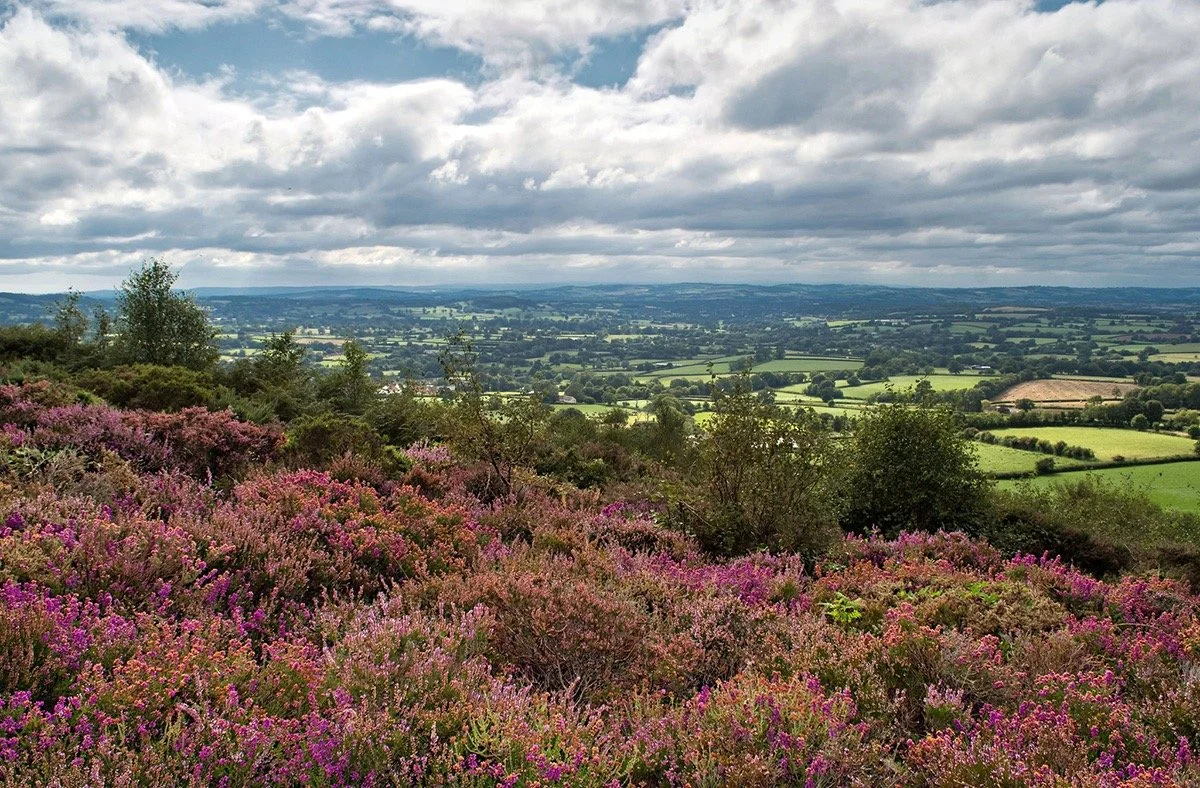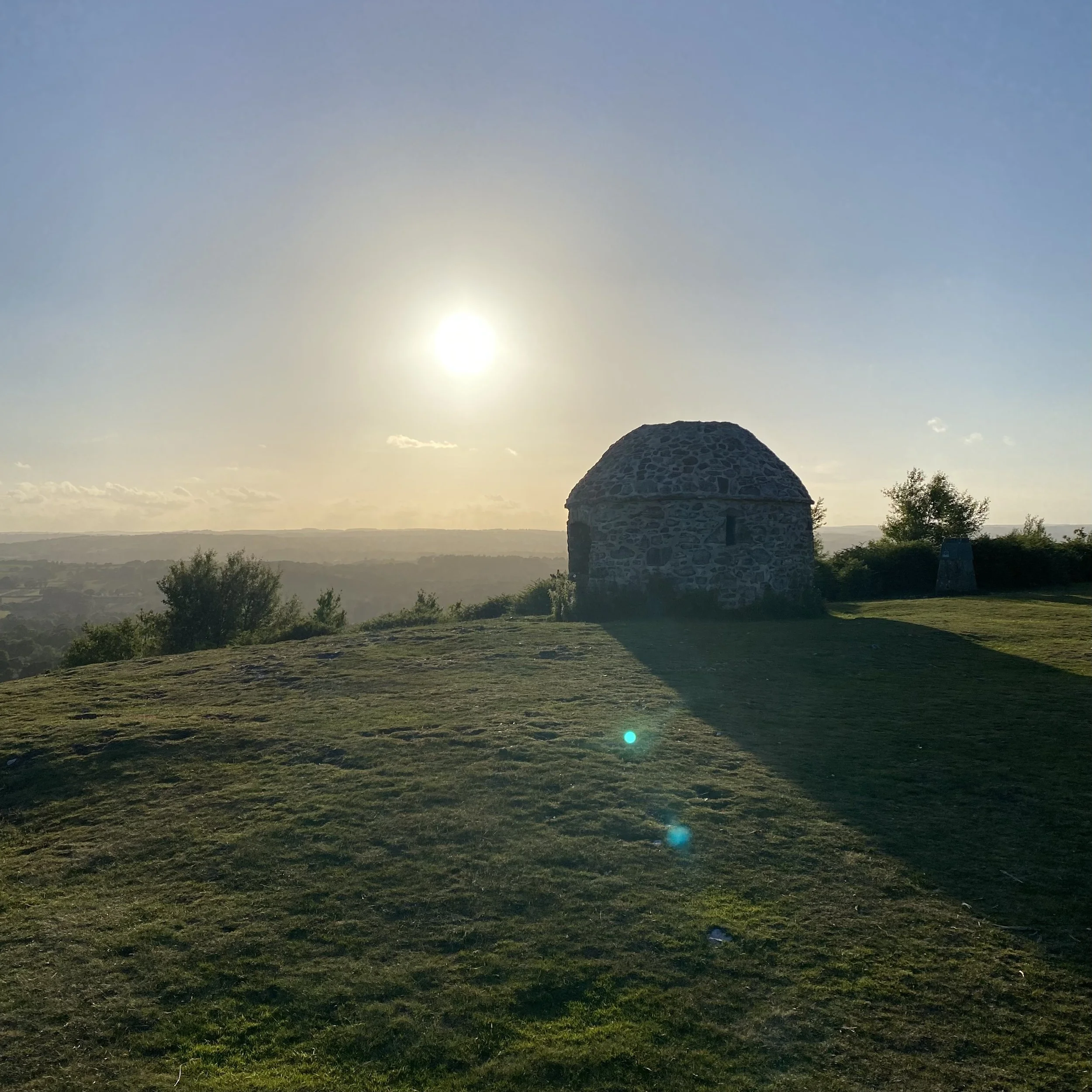Heather Honey from Culmstock Beacon – The Blackdown Hills National Landscape AONB
Devon Heather Honey
Our unique, premium ling heather honey is harvested straight from the heart of the Blackdown Hills.
Our Honey is a testament to the beauty and biodiversity of the area.
As the bees forage on the ling heather that blankets the hill in late summer, they collect nectar from the heather flowers, which is the unique ling heather honey that is rich, aromatic, and full of the embodiment of this exquisite landscape. The result is honey with a distinctively warm, woody sweetness, a floral fragrance, and a beautiful amber hue.
Heather honey stands out among other honeys for its premium quality, unique bioactive properties, and artisanal production, making it a true natural superfood.
But what makes our Heather Honey truly special is our approach to our bee keeping – our priority is their health and happiness.
We believe in working with nature, not against it. That’s why we ensure the practice of organic beekeeping methods that respect the bees’ natural behaviours and protect the environment.
We never harvest more than the bees can afford to give.
Every jar of honey helps to support the bees which play a crucial role in maintaining the health of our ecosystems through pollination.
Why is Heather Honey so expensive?
Heather honey stands high amongst the pure honeys available.
In 2024 we were unable to collect any heather honey, the summer here was hard for the bees, wet and damp. The colonies make their own decisions to stop collecting and concentrate on survival for the autumn and winter, and any late season honey was left for their stores.
2025 – what a summer, and large strong colonies, aligned with a bumper display of heather, we are so delighted to be able to bring some of our 2025 heather honey to the table.
Heather honey has a unique, robust flavour and a special jelly-like texture that distinguishes it from other honey varieties. It is a monofloral honey, produced from the nectar of heather plants, which contributes to its distinctive qualities and higher price. Its rich, slightly bitter taste captures the essence of the wild landscape making this such a premium product.
The flowering period for heather is brief, from August to early autumn. This time frame is very restrictive. Our main honey harvest is over by July, so only the strongest hives will ‘work’ the heather, and only if the weather and strength of the hives align, will there be heather honey to harvest. This seasonal exclusivity contributes to its rarity and higher cost.
The thixotropic nature of heather honey, which means it has a gel-like consistency that temporarily becomes less viscous when agitated,) makes it more challenging to extract from the honeycomb compared to our other honey.
The ling heather is a small flower, with little nectar available from each flower, so the effort to draw nectar from heather is massive – bees are the only insect that provide food for us!
We know that the bees are in the most amazing location, so accessing and monitoring our bees may require more time and labour but the priority is always to benefit the bees’ health and the environment. Our heather honey is sustainable and harvested using organic beekeeping methods, we cannot label it as organic, as we are not certified organic, we believe a label is just that, and hope that our story and of course the honey speaks for itself.
Our Ling Heather honey is exclusive to us, the quantity we can harvest is limited. Our bees have been incredibly productive this year, so we have plenty of honey, so please don’t be disappointed if we run dry of heather honey, our honey is stunning flavoursome and totally authentic.
The Blackdown Hills - National Landscape AONB
The importance of the Blackdown Hills National Landscape lies in its outstanding natural beauty, rich and diverse archaeological and historical heritage, and its role in providing vital ecosystem services like biodiversity, climate resilience, and public wellbeing. As a protected National Landscape, it safeguards an unspoiled rural character shaped by millennia of human activity, from Iron Age hill forts to World War II airfields. Its importance also stems from its role in supporting sustainable living, local economies, and providing a space for people to connect with nature.
Natural and scenic importance
Outstanding natural beauty: The area is designated for its distinctive and unspoiled rural character, featuring steep hillsides, valleys, ancient woodlands, and open views.
Biodiversity: It is home to diverse wildlife, with many areas protected as Sites of Special Scientific Interest (SSSIs).
Ecosystem services: The landscape plays a crucial role in providing essential services such as flood management, helping to mitigate climate change impacts and enhance nature recovery, according to the National Landscape Association and other partners.
Historical and cultural importance
Rich heritage: The hills contain a wealth of evidence of past human occupation, including Iron Age hill forts (like Hembury), Roman iron smelting sites, medieval field patterns, and World War II airfields.
Historic sites: Significant landmarks include Culmstock Beacon, Castle Neroche, the Wellington Monument, and remnants of Dunkeswell Abbey.
Living history: Traditional farming practices, particularly dairying, have helped preserve much of the historic rural character and landscape features, such as hedgerows and field systems, that are vital to the area's identity.
Modern importance
Public wellbeing: The area's tranquility and natural beauty contribute to the wellbeing of the public, offering opportunities for recreation and connection with the natural world.
Community and economy: It serves as a base for sustainable rural communities and is integral to the local economy, with initiatives aimed at balancing development with conservation.
National collaboration: The Blackdown Hills are part of a national network of protected landscapes that collaborate on issues like climate change, nature, and heritage, contributing to wider national goals.




